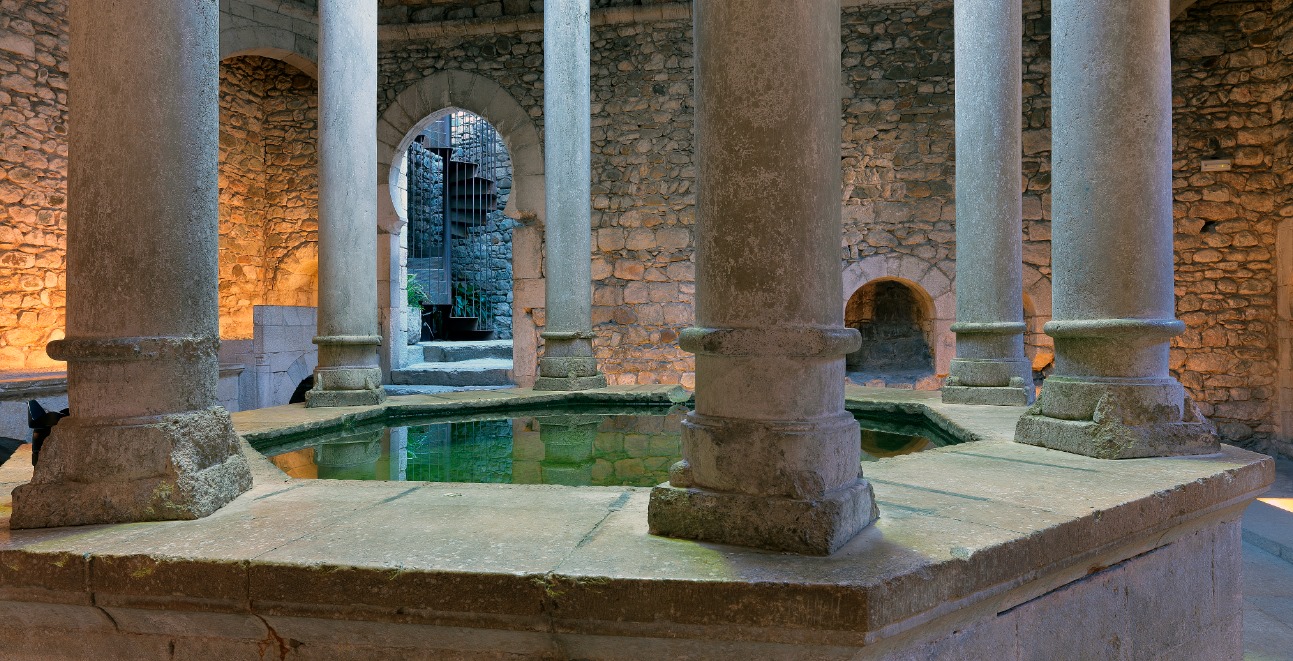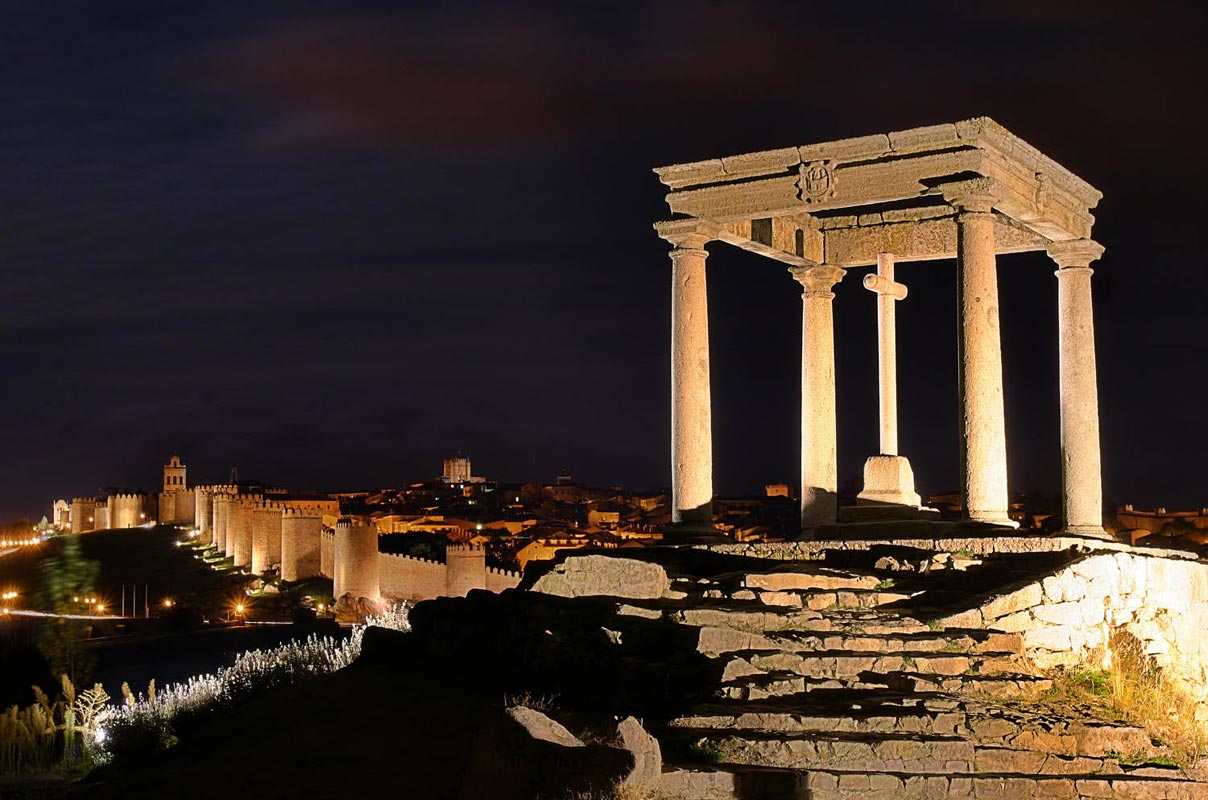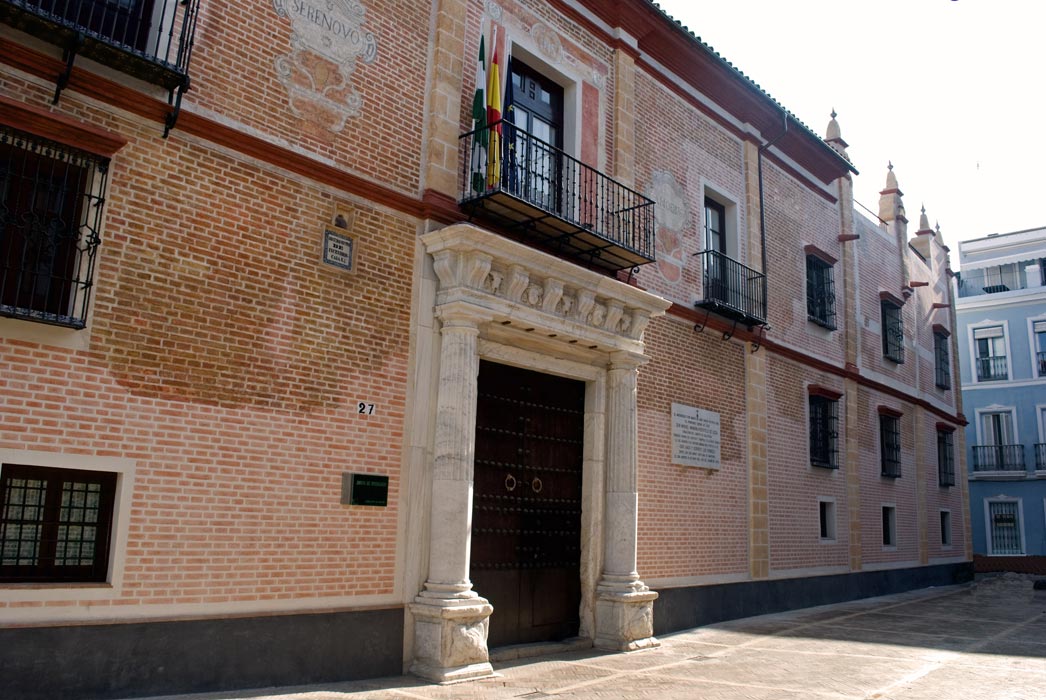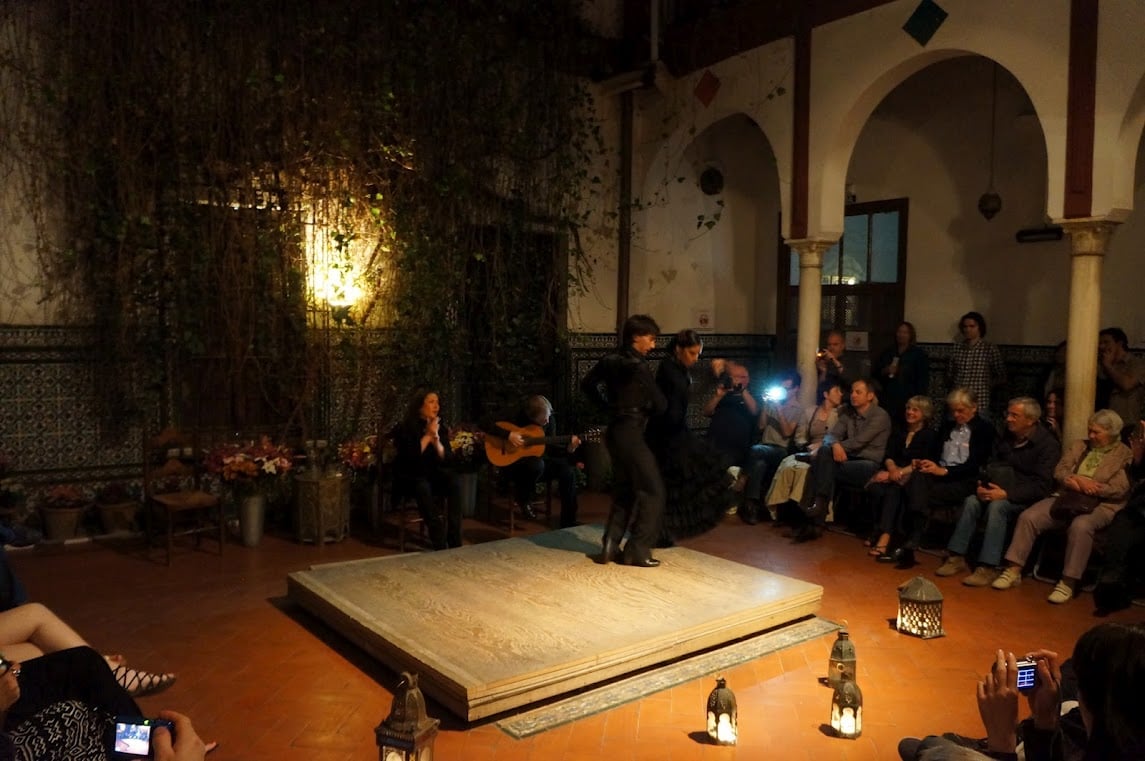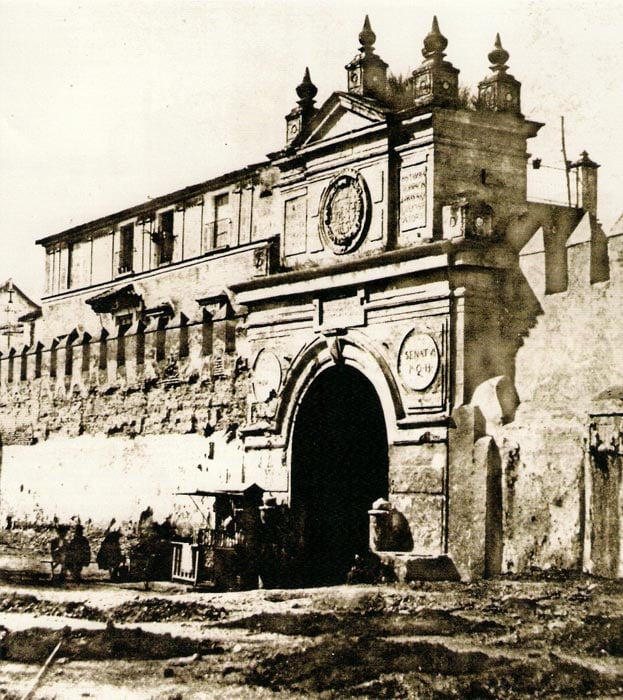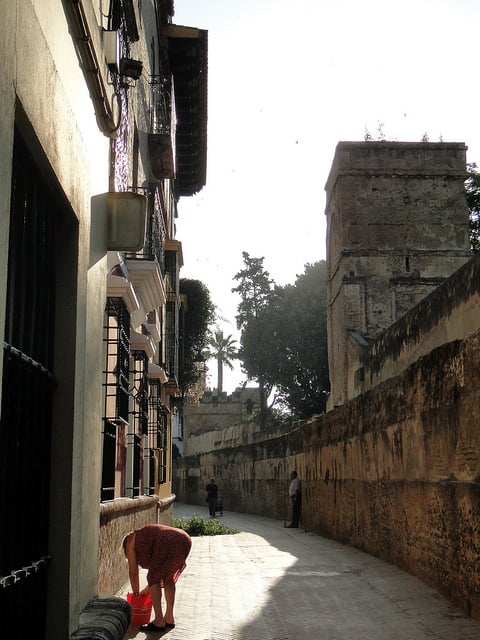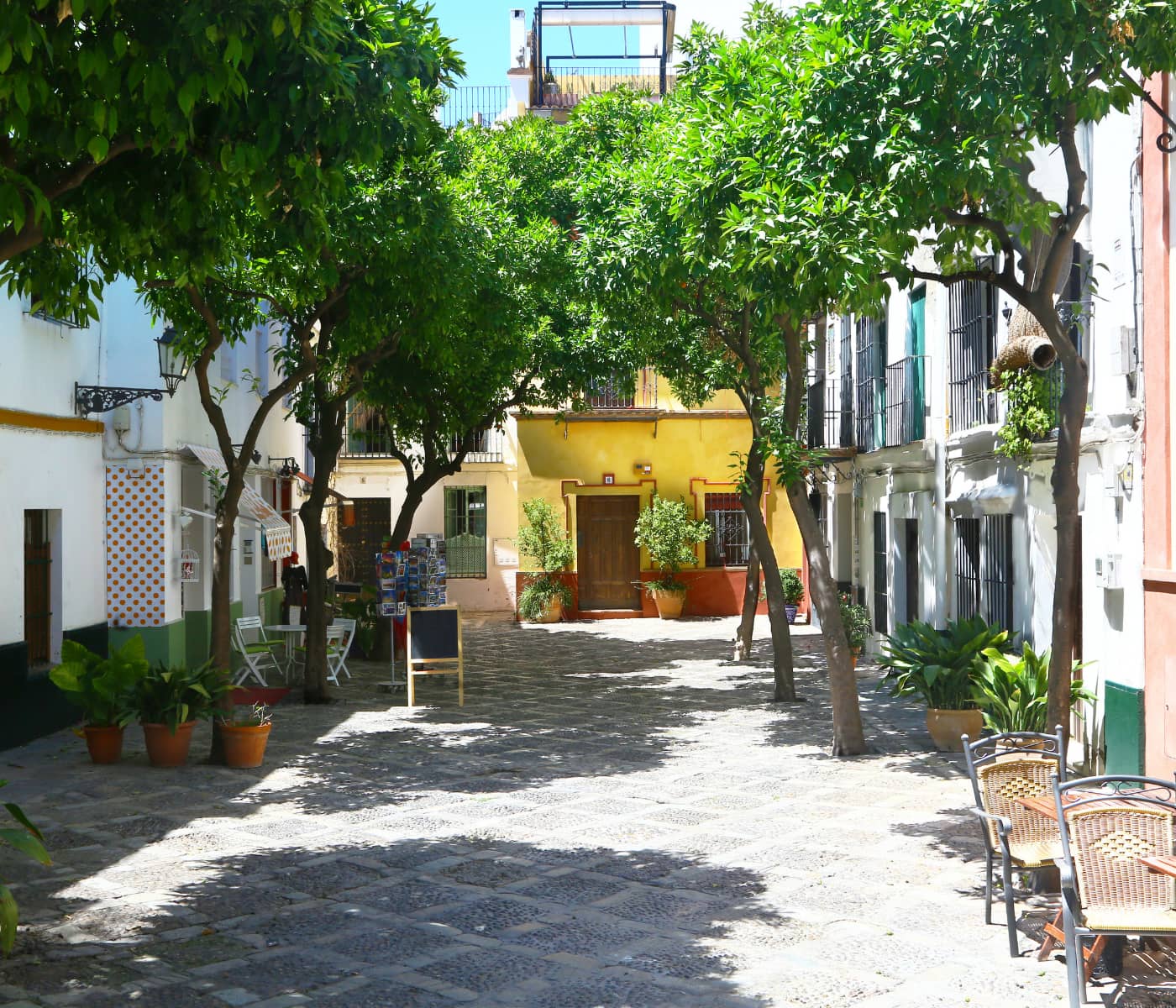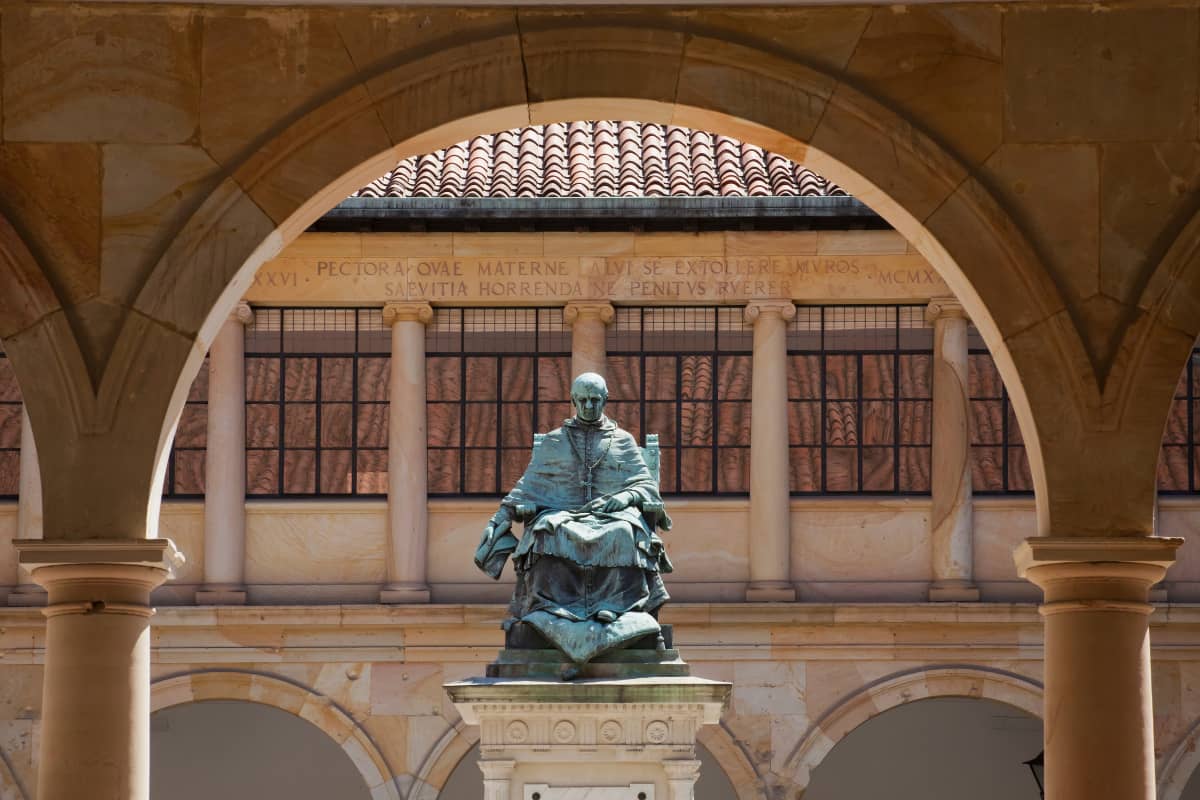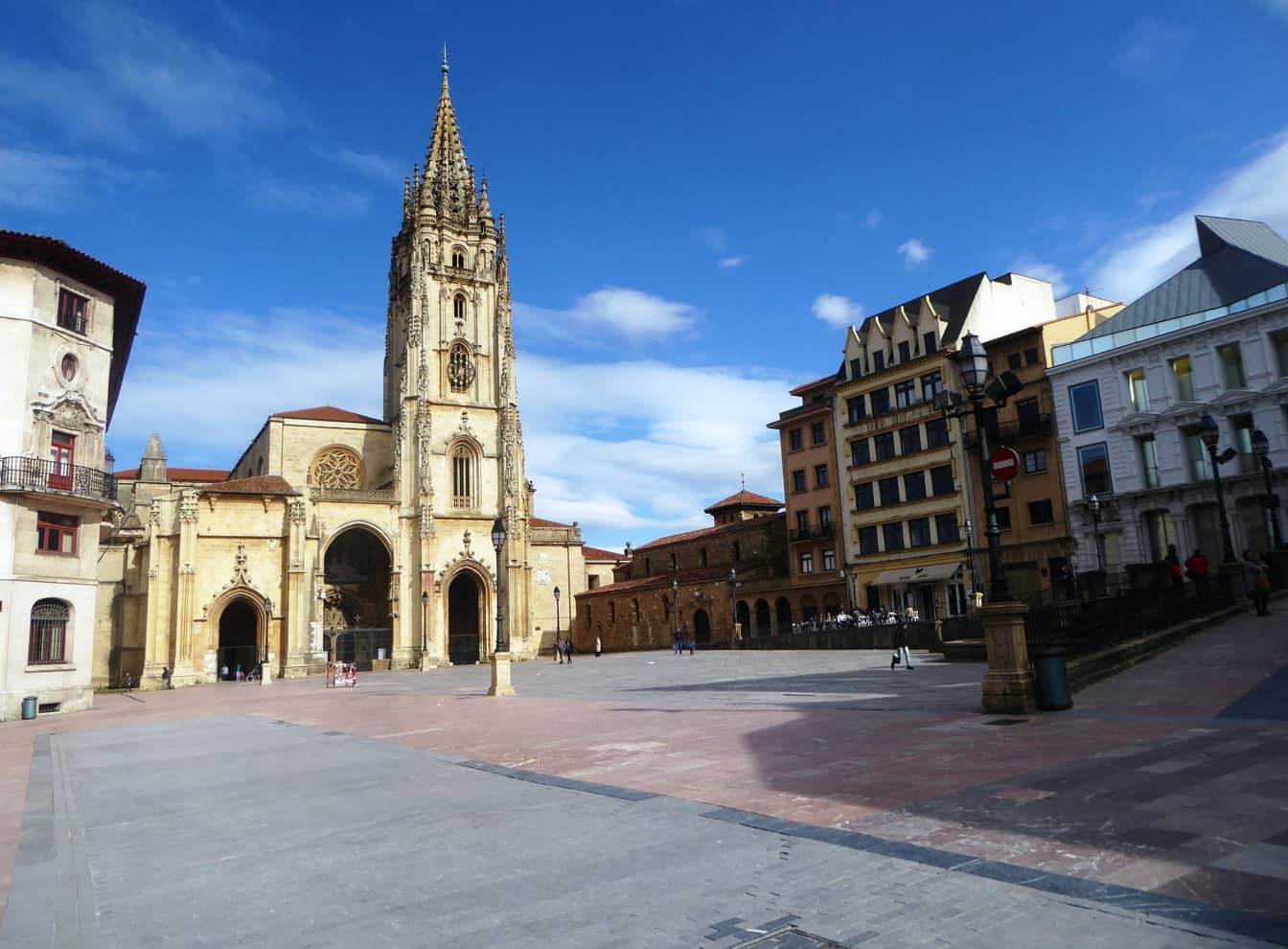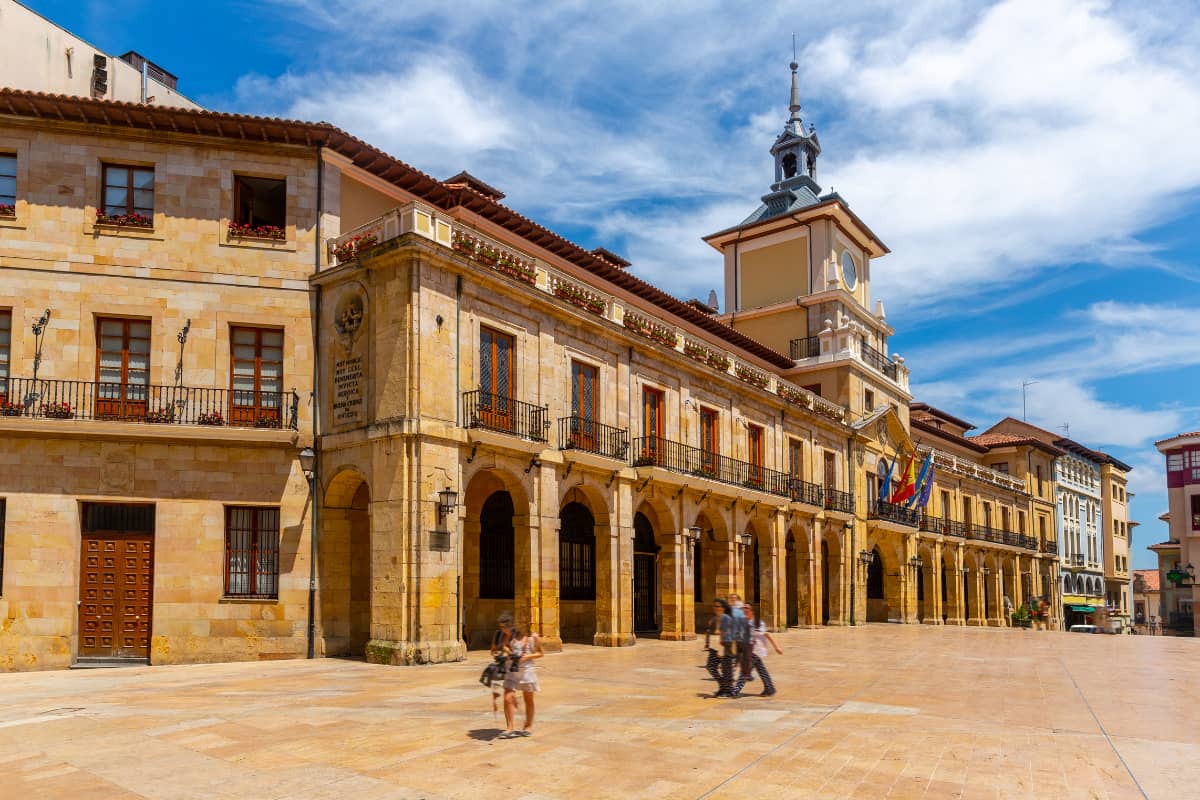The Paseo de la Reina Juana connects to Fernando el Católico street where there are excellent baths, popularly known since the 19th century as the Arab baths whose sumptuous apodyterium or changing room is presided over by a large Star of David. They are dated 1194, and after being closed in the 15th century, they were occupied in 1617 by a community of Capuchin nuns. In 1929, they started being managed publicly. These excellent baths are also endowed with a frigidarium (cold room), tepidarium (warm room), caldarium (hot room) and an oven.
Archives: Directory listings
Directory listings
The Four Pillars
Across the bridge in Avila and following the road as far as the shrine of the Four Pillars, seeking this intimate, magic moment in which the city is lit up, with the city wall in the foreground, and the sky of Ávila turns from blue to black in an unforgettable experience. Viewed from here, tourists can see the Cabalistic structure of Ávila, the Jerusalem of Castile as it was christened by the poet Avner Pérez, and the interior castle of Teresa de Cepeda y Ahumada.
Miguel de Mañara Palace
The Miguel de Mañara palace, situated on Levíes street, was built by the Almansa family in the 15th century on the remains of previous constructions, including a Mudejar house. The house fits in with Renaissance typology, though with slight modifications at a later date. As regards the first constructions on which the Renaissance palace was based, some plinths have been conserved its murals in one of the rooms on the ground floor, probably carried out in the second third of the 15th century. The Mañara palace conserves a collection of screens of Jewish origin. Curiously, they almost all have different designs. It is the Seville façade which best conserves these elements. Levíes street where it is located gets its name from Samuel Ha-Levi, the treasurer and main book-keeper of King Pedro I.
House of Memory of Al-Ándalus
Cultural centre situated in the Santa Cruz District, Casa de la Memoria de Al-Ándalus organises exhibitions and concerts and throughout the year a musical cycle focused on the art of flamenco. The headquarters is an old house-palace that conserves the elements of the original Jewish house (15th century) as well as other elements from the 16th and 17th centuries. The house and the shop can be visited where exclusive craftsmanship of the Al-Andalus and Sephardi tradition can be bought.
Carne Gate
Carne Gate, called Minjoar by the Moslems and of Almoravide origin, was the only exit to the exterior from the fenced Jewish quarter district. It was situated at the point at which the current Santa María la Blanca street meets Cano Cueto street, where the market was located. During the course of it history it has received various names such as the Perlas gate, the Jewish quarter gate, as it was the direct entry from the city to the latter, and the one that stuck, Carne (meat) gate, as there was an abattoir on the outskirts of the city constructed at the time of the Catholic Monarchs and immortalized by Cervantes in his Coloquio de los perros (Colloquy on dogs), said to be one of the three places which the King had yet to conquer in Seville and where Berganza was born, one of his characters.
Water Alley
Via Agua (Water Alley) is an alley that runs parallel to the Citadel gardens where one can see houses decorated with numerous plants, flowerpots and ivy. Worthy of special mention is the house at number 2 with its patio surrounded by columns and flowerpots. On the façade of this house there is a headstone commemorating the visit by the US writer Washington Irwing. This alley leads us to Alfaro square, the access gate to the Murillo gardens from the Santa Cruz district which was created in 1911, when they were granted by the Citadel to the city under royal order, as it belonged to its former garden.
Barrio Santa Cruz
Santa Cruz is the primary tourist neighborhood of Seville, Spain, and the former Jewish quarter of the medieval city. Santa Cruz is bordered by the Jardines de Murillo, the Real Alcázar, Calle Mateas Gago, and Calle Santa Maria La Blanca/San José. The neighborhood is the location of many of Seville’s oldest churches and is home to the Cathedral of Seville, including the converted minaret of the old Moorish mosque Giralda.
Fernando de Valdés Salas Statue at Oviedo University
The stern look on the face of Fernando de Valdés Salas in the statue representing him at the center of the cloister of Oviedo University, undoubtedly incarnates the pompous character of the founder of this institution, but it is also, if you want to look at it that way, a certain examination of conscience after his work as the grand inquisitor between 1547 and 1566 when he was the central figure, amongst other cases, in the famous proceedings against Bartolomé de Carranza, the author of a big Índice de libros prohibidos (List of Prohibited books), but also an unflagging driving force behind cultural and charitable ventures; perhaps today don Fernando would not have been surprised to know that the volumes kept at the University library include two magnificent editions of the Ferrara Bible from 1553, a Bible in Spanish translated word for word from the Hebrew truth by most excellent academics and seen and examined by the office of the Inquisition. Design in 1574 by Rodrigo Gil de Hontañón, the building, surrounded by the mandatory university quarry which established the higher jurisdiction of the chancellor, accommodated the faculties of Arts, Canons, Laws and Theology after its solemn inauguration in 1608 which its main promoter Valdés was unable to attend as he died a few years previously. The magnificent building which can be seen today is the culmination of profound restoration after the damage caused to the property during the October Revolution of 1934 and the subsequent Civil War.
Porlier Square
At the same Porlier square, the sculpture by Eduardo Úrculo El regreso de Williams Arrensberg (The return of Williams Arrensberg – 1993),a lifesize portrayal of a traveller with a hat and overcoat, resting on his suitcases, has become a true symbol of the city de Oviedo. On the northwestern side of the square an explanatory Jewish settlements´ plan situates in this square the main Jewish landmarks of Oviedo, at least since the period when the members of the aljama ceased to be free to elect their place of residence in the city to focus on a specific place as from the Ordinances of the Council of Oviedo of 1274. The space occupied by this square, plus that part of the block formed by the building on the northern side and that of the current Juan XXIII square, constitutes the essence of the Jewish quarter of Oviedo from the Castillo gate to the Socastiello Nueva gate and from the gate outwards, should they so wish. Those who drafted the Ordinances justify these limitations by the fact that the Jews»se esparzían a morar por la villa, por que venja danno ala villa, en muchas maneras que non queremos declarer», but they use this opportunity to establish a series of impediments to their activities. From this point onwards the Jews of Oviedo can no longer accept the pawning of stolen objects, grant loans to women without the autorisation of their husbands or carry out financial activities after nightfall.
Constitution Square
From Fontán, Fierro street, where the church of St. Isidore is located, leads to Constitución square, a broad space dominated by the colonnades of the town hall whose central arch coincides with the old access gate to the walled city. The Torre del Reloj (Clock Tower) is one of the references of this building endowed with good proportions, dated as being from the 17th century, serving as a time tunnel to leap, once again, from the Baroque to the Middle Ages, in an environment which draws us a little closer to that of the historic Jewish quarter of Oviedo.
